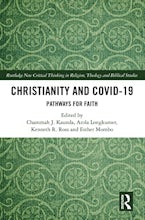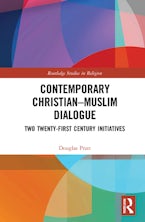- Home
- Global Pentecostal and Charismatic Studies
- religion
- Global Chinese Pentecostal and Charismatic Christianity

Global Chinese Pentecostal and Charismatic Christianity
Edited by: Fenggang Yang, Joy K. C. Tong and Allan H. Anderson
Series: Global Pentecostal and Charismatic Studies
The new edited volume Global Chinese Pentecostal and Charismatic Christianity is essential for anyone who wants to understand the dynamics of growing Chinese contemporary religion. While Pentecostalism has been seen as the fastest growing religion in the nebulous “global south,” these scholars engage with the trends and particularities of the exponential growth with a detail toward the diversity of the movement and the dangers of global Pentecostal generalizations. Originating from a symposium on Chinese Pentecostal and Charismatic Movements in the Global East held in 2013 at Purdue University, the contributing presentations deliberately evolved into a thorough edited volume complete with sixteen unique chapters on the vitalities and challenges of Chinese Pentecostalism.
The contents of the volume are separated topically into four sections. Part 1 examines the historical, global, and local contexts of the Pentecostal movement in China. With articles from Donald Miller, who elucidates the contextual problems of defining a movement, to Connie Au, who examines the economic disparities and convergences of elite and poor Pentecostals in early 20th century Hong Kong, the chapters in this section evoke a sense of adaptability within Chinese culture and Christian spiritual expression. Part 2 focuses on the True Jesus Church, arguably the largest Chinese “Pentecostal denomination,” with case study articles on topics of inter-cultural friendship, Confucian-based pedagogy, and the religious phenomena of speaking in tongues. Next, part 3 introduces formal issues in methodology as they relate to specific regions and movements. Its essential question is, “How to we classify the term Pentecostal?” Lastly, part 4 contains chapters that deal with the charismatic expressions of certain religious movements that cannot be defined by more traditional Pentecostal characteristics. Karrie Koesel examines the strong patriotism found in the underground movement, while Rachel Zhu writes refreshingly on the barely researched presence of Catholic Charismatic Renewal in China. The diversity of the articles, as well as the categorization of regions, methods, and religious characteristics gives the reader an understanding of the scope of vibrant spiritual expressions of Christianity which exceed the scope of an American mainstream understanding of the term “Pentecostal.”
In analyzing the composite force of the edited volume, a few matters become abundantly clear: while the authors sufficiently address the difficulty of scientifically researching Chinese Pentecostal movements due to the sensitive political climate of religious persecution in China, it is evident that the methods of case study they employ are able to grasp tightly at the ethos of Chinese religious growth. For the Western reader, this book addresses specific ways in which Christianity has taken root and flourished outside the surveillance and support of European or American colonialist missionary endeavors. Under the scholarship of Allan Anderson, Senior Professor of Global Pentecostal Studies and Missiology at the University of Birmingham, the writers convey the sense that Pentecostalism should not be seen as a uniquely American or Western phenomena to which Chinese Christianity owes its denominational allegiances. Rather, the voices of the volume believe that while there are historical points of connection, there is no prototypical form of Pentecostalism, because the movement is characterized by adaptability to different cultural contexts. It might be the case that readers who are sympathetic to the Three-Self Patriotic Movement might find the portrayal of the unregistered church to be triumphalist in narration, however it seems that the traditional dichotomy of the Three-Self Patriotic Movement and unregistered churches is handled through descriptions of religious practices and traits, rather than value judgements.
Overall, Global Chinese Pentecostal and Charismatic Christianity makes fluid claims about the rapid growth of revivalist Christianity and accomplishes its goal of conveying the variety and complexity of unregistered Christianity in mainland China.
Lucinda Yang is a doctoral student in Systematic Theology at Baylor University.
Lucinda YangDate Of Review:March 29, 2018
Fenggang Yang is professor of sociology and founding director of the center on religion and Chinese society at Purdue University. He is the author of Religion in China: Survival and Revival under Communist Rule (2012) and Chinese Christians in America: Conversion, Assimilation, and Adhesive Identities (1999), and the coeditor of more than ten books. He is the founding editor of the Review of Religion and Chinese Society. Two of his articles received distinguished article awards. He was elected the president of the Society for the Scientific Study of Religion (2014–2015).
Joy K. C. Tong is visiting assistant professor in the sociology and anthropology department at Wheaton College, IL. She is also Affiliate Professor of Chinese Studies at Trinity Evangelical Divinity School, IL. She has published monographs, articles, and book chapters on China and Southeast Asia, including Overseas Chinese Christian Entrepreneurs in Modern China (Anthem, 2012).
Allan H. Anderson is professor of mission and pentecostal studies at the University of Birmingham, England, where he has worked since 1995. Raised and educated in Southern Africa, he is the author of numerous articles and several books on global Pentecostalism, the most recent being An Introduction to Pentecostalism (Cambridge, 2014) and To the Ends of the Earth (Oxford, 2013).











